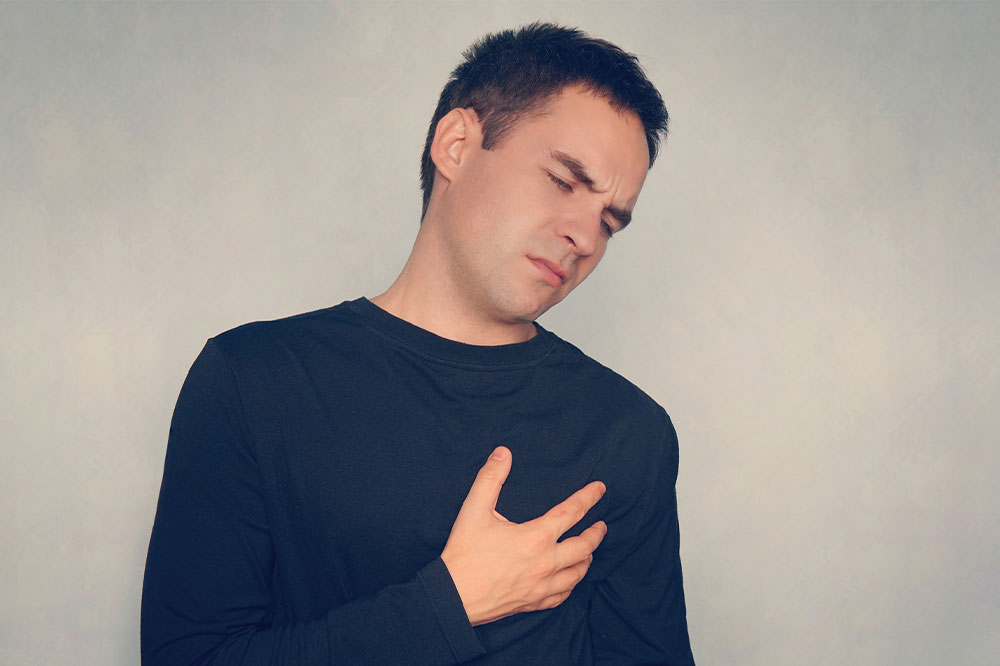
Atherosclerosis – Symptoms, causes, and diagnosis
Atherosclerosis refers to plaque buildup – a combination of blood elements, calcium, fat, and cholesterol, in and around the artery walls. Arteries are the blood vessels that carry oxygen-rich blood from the heart to the rest of the body. When they stiffen and narrow from the plaque buildup, the blood flow to the tissues and organs is curtailed, resulting in tissue damage and other symptoms. Atherosclerosis can affect any of the body’s arteries traveling to the heart.
Symptoms
Typically, atherosclerosis affects older people, but it may develop during adolescence. Inside the artery, the streaks of WBCs will show on the artery wall. Usually, there are no symptoms till the plaque ruptures or hampers the blood flow. It usually takes several years to occur, and the symptoms will depend on the artery affected.
Carotid arteries
These supply blood to the brain. The restricted blood supply may lead to a stroke. Some symptoms that one may experience are:
Paralysis
Weakness
Facial numbness
Headache
Difficulty breathing
A person may need immediate medical attention if they experience any stroke signs.
Coronary arteries
These supply blood to the heart. When the blood supply to the heart fails, it may lead to heart attack and angina. Some symptoms that a person may experience are:
Faintness
Chest pain
Anxiety
Vomiting
Coughing
Renal arteries
These arteries supply blood to the kidneys. If the blood supply to the kidneys is inadequate, it may lead to chronic kidney disease. People with significant renal artery blockage that can cause chronic kidney disease might experience the following:
Inability to concentrate
Swelling in the feet and hands
Loss of appetite
Peripheral arteries
These arteries supply blood to the pelvis, legs, and arms. If the blood does not circulate effectively, it may lead to pain and numbness in the limbs. In some severe cases, gangrene and tissue death may also occur. Sometimes, it may also amplify the risk of a heart attack or a stroke.
Causes
When the arteries become inflamed and stiff, and the plaque builds up, the blood may experience trouble flowing through them across the body. It prevents tissues and organs from getting the oxygenated blood necessary to function.
Some of the causes of the hardening of the arteries are:
High cholesterol
A yellow, waxy substance, cholesterol, is found in the body and the foods one eats. If the cholesterol levels in the blood are too high, they start clogging the arteries. Over time they turn into a hard plaque that blocks or curtails the blood circulation to the heart and the other organs.
Food
What one eats can also be one of the causes of atherosclerosis. Thus, one must follow an overall healthy nutritional regime that includes legumes, nuts, low-fat dairy products, whole grains, a variety of vegetables and fruits, and non-tropical vegetable oils like sunflower and olive oil. One should also avoid drinks and foods with added sugars, such as candy, desserts, and sugary beverages. Avoid foods with a lot of salt and unhealthy fats like trans-fat.
Aging
As one ages, the blood vessels and the heart work harder to receive and pump blood. The arteries may become less elastic and stiffen, making them more susceptible to plaque buildup.
Diagnosis
The doctor will ask about the patient’s symptoms and medical history for diagnosis. In addition, they will also perform a physical examination followed by a few tests. Some tests that can help with the atherosclerosis diagnosis include:
A coronary angiogram : It involves inserting a narrow, long tube via an artery and extending it to the heart. Afterward, a dye is injected. It is visible in the X-ray images and reveals the artery blockages.
Blood tests : The doctor will check the triglyceride and cholesterol levels and the blood sugar levels via blood tests.
Electrocardiogram : It helps assess the electrical activity in the heart and reveals a prior heart attack or a heart rhythm disorder.
Blood pressure measurements : The doctor will take one’s blood pressure at different points on the legs and arms to detect blockages and measure the blood flow. They employ a special ultrasound device for this.
Treatment
Doctors recommend certain treatments to help cure the condition. Early cures can lower the risk of severe complications. The treatment can limit or slow plaque development, treat symptoms and avoid the development of blood clots.
Some treatment options include:
Surgery
Prescription therapies
Lifestyle changes




